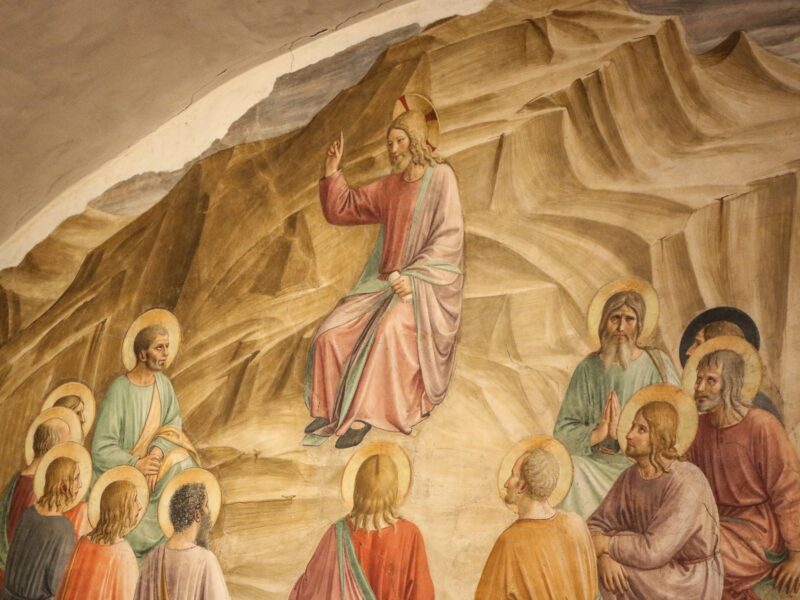
‘Come With Me, And I Will Show You’
Easter Sunday. Fr John O’Connor preaches on the events that began with the finding of the empty tomb.
One of the most moving reflections on the Resurrection I know of was written by a grieving father mourning the loss of his son in the First World War. In his short story, The Gardener, Rudyard Kipling tells of Helen, who leaves Britain to take charge of her brother’s child and bring him back to her Hampshire home. Helen’s brother, an inspector of the India Police, who was apparently somewhat unstable and imprudent, got himself entangled in an unfortunate liaison. Helen selflessly agreed to bring up her nephew, the offspring of the affair, after her brother died due to a fall from a horse.
Helen was a highly correct woman, and always made sure that her nephew, Michael, addressed her as his aunt, and not as his mother. Michael grew up, joined the army, and was sent to France to fight in the First World War. One month after writing to Helen that there was nothing to worry about, Michael was hit by a shell splinter and was killed instantly.
The story continues with Helen travelling across the English Channel, like so many grieving mothers and fathers, wives, fiancées and sweethearts, to visit the graves of loved ones lost to the terrible carnage. When Helen arrives at the graveyard she is unable to find Michael’s grave amidst the thousands of graves of the fallen. Then she sees a man, evidently a gardener, and goes to him for directions to her nephew’s grave:
‘Come with me,’ he said, ‘and I’ll show you where your son lies.’
When Helen left the cemetery she turned for a last look. In the distance she saw the man bending over his young plants; and she went away, supposing him to be the gardener.
The words ‘supposing him to be the gardener’ make clear reference to a passage from St John’s Gospel, shortly after this Sunday’s reading. It refers to Mary of Magdala encountering the Risen Christ, whom she supposed to be the gardener. And so Kipling tantalises us with the suggestion that the man whom Helen met in the graveyard was in reality the Risen Christ.
What seems to fit with this possibility is what he says to Helen:
‘Come with me,’ he said ‘and I’ll show you where your son lies.’
He refers to Michael as Helen’s son, even though she asked him for directions to her nephew’s grave. It’s not clear what is going on here, but the gardener seems to have touched on a buried truth. Assuming that the gardener is the Risen Christ, there are at least two possibilities: one is that in bringing up Michael with love equal to that of a mother, Helen possesses a kind of motherhood that is not recognised even by herself, because Michael is not physically her son; but it is recognised by the Risen Christ.
Another possibility, the one that seems more likely to me, given the various hints throughout the story, is that Helen is in fact Michael’s mother, but, because she was not married, concocted a story about her son being her nephew, so as to avoid scandal.
Either way, in the light of the Risen Christ, realities or secrets buried over the years come to the surface; and Helen can choose whether she is prepared to accept or not accept the gift of truth offered her by Christ.
Something similar is offered to Christ’s disciples. What is so striking about the Gospel account of Easter morning is their reactions. You might have expected joy, but instead we have confusion and distress. Only the Beloved Disciple comes to belief immediately. That the Beloved Disciple comes to belief so quickly suggests that in his teaching Jesus had given enough information for his disciples to have at least considered the possibility of his rising from the dead.
Perhaps there is more going on here than intellectual confusion, confusion about the facts. For the presence of the Risen Christ also means that Jesus’s disciples will have to face certain uncomfortable truths about themselves. This is perhaps most obvious in the case of Peter. He was the special one chosen to receive the Keys of the Kingdom, but he was also the one who denied Jesus three times. He abandoned Jesus when Jesus was most alone.
That Christ is risen means that uncomfortable truths such as these will not remain buried. The Risen Christ forces all our baggage, our guilt and our shame, to come to the surface. So the Resurrection is not a straightforward event for Peter. It means having to confront who he actually is, the one who abandoned Jesus.
But Kipling points out something very important. The gardener confronts Helen with truth, but does not do so with violence or recrimination. He does so with the gentleness of a gardener tending a young plant.
The Risen Christ is the source of our joy and hope. But the Risen Christ also challenges us to journey on the pilgrimage of truth. Perhaps somewhere in Peter’s confusion was some awareness of this. But what he had not yet come to realise is that facing up to the painful truth about himself in the presence of the Risen Christ is not about accusation, revenge or remaining in the past. It is about facing the past in order to move forward and be liberated.
On Easter morning Peter may have had an inkling that he might have to face some uncomfortable truths. It would only be later, when he was face to face with the one whom he abandoned but who is eternally alive, that he would discover that he need not be afraid.


